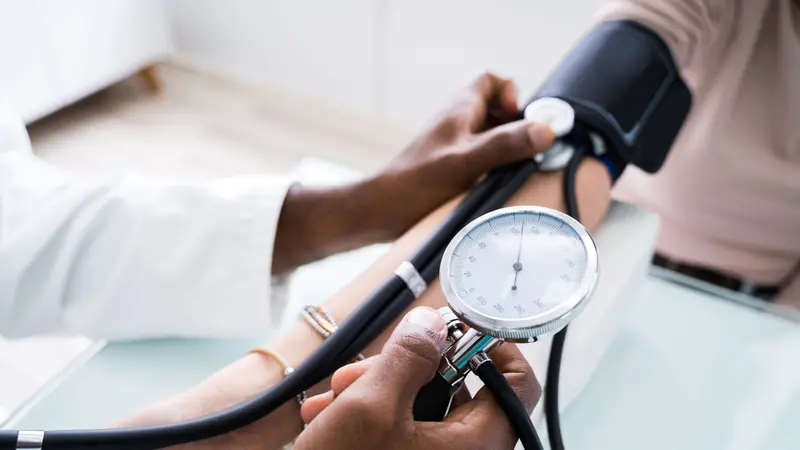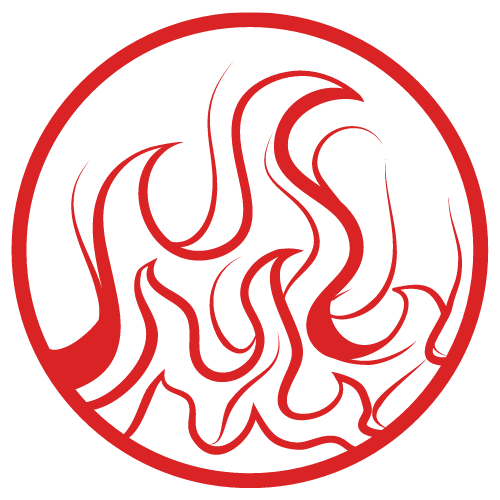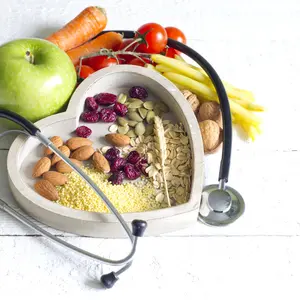

Chronic Conditions and Diseases

Chronic Conditions and Diseases
High Blood Pressure and Controlling It Without Medication
High blood pressure is the most important risk factor in predicting heart disease. The reason is simple—blood pressure is not merely a risk factor; it is also a direct marker of blood vessel function. And elevated blood pressure means that the arteries are sick and dysfunctional, growing arterial plaque, and decreasing blood flow.
Blood pressure is typically recorded as two numbers, written as a ratio like this: 118/78 mm Hg. The higher top number is the systolic blood pressure, measuring the pressure in the arteries when the heart beats (when the heart muscle contracts). The lower bottom number is the diastolic blood pressure, measuring the pressure in the arteries between heartbeats (when the heart muscle is resting between beats and refilling with blood). Blood pressure rises with each heartbeat and falls when the heart relaxes between beats.
While blood pressure can change from minute to minute with changes in position, exercise, stress, or sleep, it should normally be less than 120/80 mm Hg (less than 120 systolic AND less than 80 diastolic) for an adult age 20 or over.
What Are Elevated Blood Pressure and Hypertension?
A blood pressure more than 120/80 is called elevated blood pressure, which is abnormal, and elevates the risk for heart attacks, strokes, and sudden death.
Generally speaking, if the systolic number is high that is a sign that the arteries are stiff and blood pressure jumps with each beat. If the diastolic number is high, that suggests that the heart is stiff and blood pressure doesn’t drop normally.
Poor diet and low fitness are the most common reasons for having high blood pressure. Eating refined carbs and sugar causes proteins in the blood to become sugar-coated, and these in turn irritate (inflame) the lining of the arteries. When deprived of nutrients from vegetables, beans, fruits, and nuts, the arteries lack the ability to dilate or open, so instead they constrict, which leads to a rise in blood pressure.
Hypertension occurs once blood pressure is greater than 140/90 mm Hg, and this leads to a strong likelihood of advanced arterial thickening. If the 140/90 mm Hg level persists during the course of a few doctor’s consultations, the standard treatment is to start a blood pressure medication.
Despite that medications can lower blood pressure and help to decrease the future risk for a heart attack or stroke, they can have numerous side effects, including:
- Dizziness
- Depression
- Decreased energy
- Erectile dysfunction
- Wheezing
- Decreased exercise performance
- Decreased libido
- And a variety of more serious side effects
The goal is to have normal blood pressure without needing medication. But achieving normal blood pressure without hypertension drugs requires long-term changes in diet, activity, nutrient intake, and proactive stress management. There is no magic bullet apart from comprehensive lifestyle changes. And for those who are taking these medications currently, it’s important to work with a medical provider before making lifestyle changes to avoid overtreating blood pressure and having low blood pressure that can result in dizziness, dangerous loss of consciousness, and falls. Medications to lower blood pressure should not be stopped without first consulting with a medical provider.
What Causes Hypertension?
There are four lifestyle choices that can cause hypertension and cardiovascular disease.
- First, for those who are inactive or not aerobically fit, the arterial walls become weak and stiff because they are not being exercised enough.
- Second, if the diet does not include a daily portion of leafy green vegetables, there will be a vitamin K deficiency. Without it, arteries become calcified and stiff.
- Third, if enough vegetables, fruits, beans, and nuts aren’t consumed, the body will not have sufficient potassium or magnesium—minerals that are essential for the blood vessels to dilate and keep blood pressure normal.
- Fourth, prolonged, unmanaged stress can also increase blood pressure. The key is proactively taking daily steps to help manage stress.
Salt consumption is another dietary lifestyle risk factor that can create a spike in blood pressure. However, genetic testing shows that this doesn’t hold true for everyone. One third of us experience a big jump in blood pressure with high salt intake, another third of us have a mild increase, and in the remaining third, there is hardly any relationship between salt intake and blood pressure. However, salt intake plays a critical role for people with heart failure, which is partly why salt intake receives so much attention.
Six Steps to Improve Blood Pressure Control without Taking Medications
Here are six steps that may be as effective as adding a medication, without the side effects, to control blood pressure, and they are pretty easy to implement, too.
Step 1: Eat five cups of vegetables and fruits and two ounces of nuts daily
Vegetables, fruits, and nuts provide nutrients such as potassium, magnesium, vitamin K, vitamin C, flavonoids, and an array of other compounds that make the arteries dilate. Everyone should eat at least five cups (which is ten servings) of produce plus two ounces (two handfuls) of nuts every day, and the more colourful the produce the better. Ideally, include one cup of cooked greens every day as green leafy vegetables are loaded with vitamin K, fiber, and folate, which are essential for good heart health.
Step 2: Exercise for 30 minutes daily
No doubt about it, exercise is great for blood pressure control. Dance, walk, bicycle, or go to the gym—find something that makes you sweat. Any activity that raises the heart rate will improve blood vessel function and blood pressure control. Always talk to a medical provider before changing activity level if there are risk factors for heart disease.
Step 3: Lose 10 pounds
Weight loss is not easy, but it is super effective at lowering blood pressure. For people who are overweight (which is two thirds of Americans), losing just 10 pounds and keeping it off is as effective in controlling blood pressure as taking a blood pressure drug.(1)
Step 4: Spend 10 minutes meditating daily
Daily meditation helps blood pressure control. For those who are not good at meditating, there are apps like HeartMath that give feedback and make meditating easier. Studies show that for many people, adding meditation or using HeartMath is as effective as using blood pressure medication.(2)
Step 5: Specific probiotic supplement species have been shown to improve blood pressure control.
Recent studies have shown that having the right probiotic species in the gut will improve blood pressure control, and taking the right probiotic species is similarly effective to taking a blood pressure medication.(3) Getting these probiotic species from food (such as yogurt or kefir) or a supplement can be effective with the right species and dosages for the proper time.
The following species when used as a supplement have been shown to be effective at improving blood pressure control(4):
- Lactobacillus plantarum
- Lactobacillus reuteri
- Streptococcus thermophilus
- Lactobacillus acidophillus
Studies have shown that several factors make using a probiotic supplement more successful(5): use species that are proven to work; combining two to three or more species is better than only taking a probiotic with one species; total dosage should be at least 10 billion microbes and up to 25 billion every day. Keep in mind that one cup of yogurt provides about five billion microbes and that a single probiotic capsule can provide 20-50 billion microbes daily; and take a probiotic daily for at least two to three months. Treating for less time may not be adequate to modify the gut flora.
Step 6: Yes, limit salt intake, but more importantly limit sugar!
For people with hypertension, decreasing typical American sodium intake of 3,800 mg per day to 2,500 mg per day lowers the top blood pressure reading (systolic) about 5 mm of Hg points, and the lower blood pressure reading (diastolic) 2.5 points. For the average American with elevated blood pressure, the typical benefit of cutting salt intake is a 2-point reduction.
On the other hand, new research suggests that sugar has a bigger impact on blood pressure than salt. The challenge in making this distinction is that most processed foods are often loaded with both. A study published in Open Heart by Drs. DiNicolantonio and Lucan compares the effect of sugar and salt on blood pressure levels and cardiovascular disease.(6)
Their findings show that:
- Consuming more sugar increases systolic blood pressure 6.9 mm Hg points and diastolic blood pressure 5.6 mm Hg in the short term, and 7.6/6.1 mm Hg if maintained for more than eight weeks.
- Drinking a 24-ounce soft drink daily can increase blood pressure by 15 systolic and 9 diastolic points and raise heart rate by 9 beats per minute.
- People who consume 25% more calories from sugar than an average person have a 300% increase in death rate due to cardiovascular disease.
- A high-fructose (sugar) diet for just two weeks increases blood pressure 7 systolic and 5 diastolic points, but also raises pulse rate, triglycerides, and fasting insulin and is associated with fatty liver disease.
The good news is there was no harm noted from eating more fruit, so don’t fret over having an apple, a peach, or a cup of berries. Do avoid fruit juice and dried fruit.
For the best results to bring blood pressure levels back to normal, combine as many of these six steps together and work with a medical provider.
REFERENCES
1. Harsha, D., Bray, G. (2008, May 12). Weight loss and blood pressure control (pro). Hypertension. https://www.ahajournals.org/doi/10.1161/hypertensionaha.107.094011
2. Alabdulgader, A. (2012, May 1). Coherence: a novel nonpharmacological modality for lowering blood pressure in hypertensive patients. Global Advances in Health and Medicine. https://www.ncbi.nlm.nih.gov/pmc/articles/PMC3833499/
3. Khalesi S., et al. (2014, October). Effect of probiotics on blood pressure: a systematic review and meta-analysis of randomized, controlled trials. Hypertension. https://pubmed.ncbi.nlm.nih.gov/25047574/
4. Khalesi S., et al. (2014, October). Effect of probiotics on blood pressure: a systematic review and meta-analysis of randomized, controlled trials. Hypertension. https://pubmed.ncbi.nlm.nih.gov/25047574/
5. Khalesi S., et al. (2014, October). Effect of probiotics on blood pressure: a systematic review and meta-analysis of randomized, controlled trials. Hypertension. https://pubmed.ncbi.nlm.nih.gov/25047574/
6. DiNicolantonio, J., Lucan, S. (2014, November 3). The wrong white crystals: not salt but sugar as aetiological in hypertension and cardiometabolic disease. Open Heart. https://pubmed.ncbi.nlm.nih.gov/25717381/


 By
By





